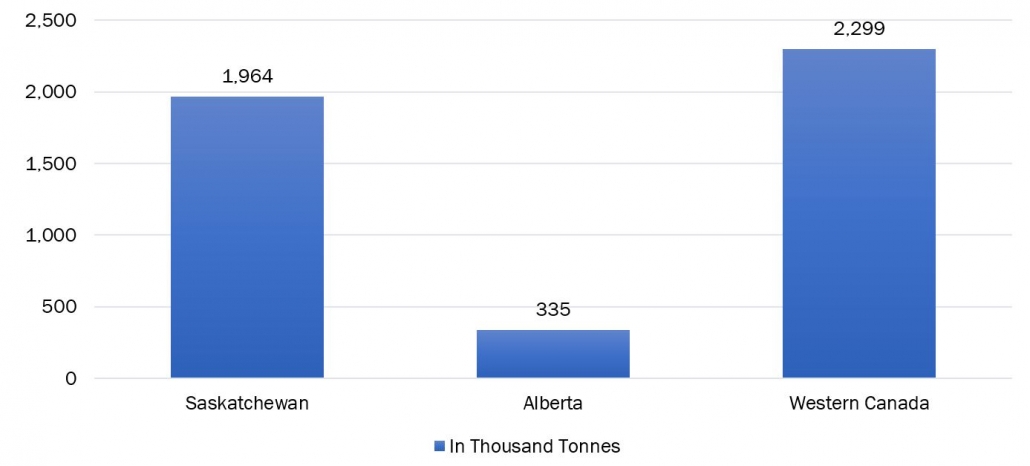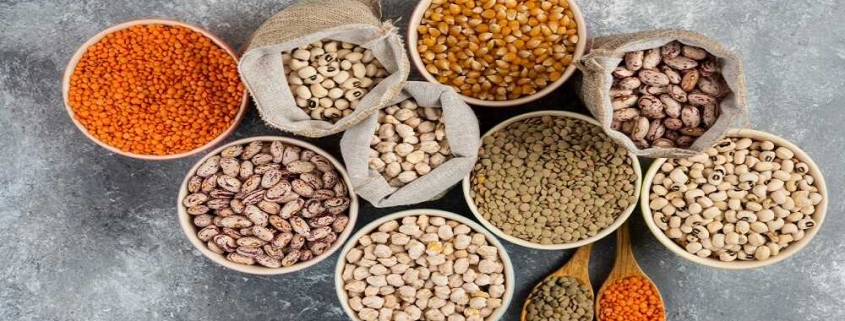Pulse Power: Unveiling the Top 10 Pulses That Pack a Nutritional Punch
Discover the world of pulses—beans, lentils, and peas—packed with nutrition and health benefits. Regular consumption of these superfoods can reduce the risk of heart disease, diabetes, and certain cancers. Versatile and easy to prepare, pulses fit seamlessly into meals, salads, breads, and even desserts. They also provide an excellent source of protein, folate, fiber, iron, and phosphorus. India and Australia lead the global production and export of pulses. Join us in exploring the “Top 10 Pulses,” nutritional powerhouses that blend flavor and wellness for a balanced, health-conscious diet.
Top 10 Pulses
- Chick Peas (Bengal Gram)
- Pigeon Peas (Arhar)
- Green Beans (Moong Beans)
- Black Matpe (Urad)
- Red Kidney Beans (Rajma)
- Black Eyed Peas (Lobiya)
- Lentils (Masoor)
- Dry Beans
- Faba Beans
- Bambara Beans
Let’s discuss each one in detail.
1. Chick Peas (Bengal Gram)
Chickpeas are a highly nutritious and versatile bean that is becoming increasingly popular around the world. Chickpeas play an important role in many food styles as they are high in protein, fiber, vitamins, and minerals, which provide numerous health benefits. They aid digestion, promote heart health, regulate blood sugar levels, and help with weight management. Chickpeas are also an excellent source of plant protein, making them ideal for plant-based diets. They can be used in a variety of dishes, including hummus, curries, and salads, making them an excellent culinary and nutritional choice. Additionally, Chickpeas contain vitamins such as vitamin B6, folate, and vitamin K, which aid in maintaining overall health. India is the largest producer of chickpeas and contributes to 50% of Indian pulse production. According to the ICAR-Indian Institute of Pulses Research, during 2021- 2022, India’s chickpea production was 13.75 million tonnes, and in 2023, India’s farmable chickpea acreage increased substantially by 25%.
Global Production of Chickpea, in Tons, for 2019, 2020, and 2021

Source: World Population Review
2. Red Kidney Beans
Red kidney beans are an important bean in the food industry due to their versatility and nutritional value. These medium-sized, dark red beans have a distinct kidney shape, and their rich flavor and creamy texture make them a popular ingredient in many dishes around the world. Red kidney beans are widely used in both traditional and modern cuisines, adding depth, flavor, and nutritional value to a wide range of dishes. They are an excellent plant-based protein source, making them an essential part of vegetarian and vegan diets. They also contain important nutrients such as dietary fiber, vitamins (including folate and vitamin K), and minerals like iron, magnesium, and potassium. This nutrient profile improves the health benefits of their consumption. Kidney beans are useful in numerous health issues such as diabetes, heart health, iron deficiency anemia, and colon health. India, China, and the United States are major producers of red kidney beans. For instance, according to the US Department of Agriculture’s “China: Pulses, Kidney Beans & Dried Pulses” report, in the year 2021–2022, China’s red kidney bean production was 250,000 metric tons (MT). Additionally, in the United States, 93 million hundredweight red kidney beans were produced in 2023.
3. Lentils (Masoor)
Lentils are eatable beans from the pulse family. They are small, lens-shaped seeds in a variety of colors, including yellow, red, green, and brown. Lentils have been cultivated worldwide for numerous years and are valued for their nutritional value, versatility, and delicious flavor. They are widely used in culinary traditions and are frequently used as an ingredient in soups, stews, curries, and salads. Lentil-based dishes are popular not only for their delicious flavor but also for their ability to absorb and enhance the flavors of other ingredients. Furthermore, lentils can be ground into flour to make a variety of baked goods and snacks, offering a gluten-free option for those with dietary restrictions. Lentils provide several health benefits as they are high in plant-based protein, making them an important part of a vegetarian or vegan diet. They are also high in fiber, iron, folate, and other important vitamins and minerals. Their high fiber content improves digestive health and helps to maintain healthy cholesterol levels.
Canada is the world’s largest producer of lentils, due to its fertile agricultural lands and favorable climate. Canadian lentils are known for their high quality and are exported to a variety of countries. Other major lentil producers are India, Turkey, Australia, and the United States, and they are grown in various areas, adapting to different climates and soil types. For instance, according to the Canadian Grain Commission, Canada’s lentil production in 2022 was 2.3 million tonnes, a 43.3% increase from the year 2021. Additionally, according to the ICAR-Indian Institute of Pulses Research, India’s lentil production in 2022 was 1.28 million tonnes from 1.42 million hectares, with a productivity of 904 kg/ha.
Production of Lentils in Canada, in Tons, in 2022

Source: Canadian Grain Commission
4. Green Beans (Moong Beans)
Green beans are a popular pulse from the bean family. This versatile vegetable is distinguished by its long, slender shape and bright green color. Green beans are widely cultivated and used in a variety of cuisines around the world and can be used raw or cooked, making them a versatile ingredient in salads, stir-fries, casseroles, soups, and other dishes. Green beans, with their tender, crisp texture and mild, slightly sweet flavor, make an excellent addition to many dishes. Apart from their food uses, these beans are extremely nutritious and provide numerous health benefits. They are low in calories and fat, but high in essential nutrients such as dietary fiber, vitamins A, C, and K, as well as minerals like manganese and potassium. They contain dietary fiber, which aids digestion, promotes bowel regularity, and helps people maintain a healthy weight. These beans are also high in antioxidants, which protect cells from oxidative stress and thus promote overall health.
China is the world’s largest producer of green beans due to its vast agricultural system and favorable growing conditions which allow for significant green bean production. Other major green bean producers include India, Indonesia, Myanmar, and Turkey. These countries use their agricultural resources and expertise to grow and supply green beans to domestic and international markets, ensuring a consistent supply of this nutritious pulse. For instance, according to the World Vegetable Center, Jilin is China’s largest mungbean producer as the varieties grown in the region are well-known for their full grain and size, shiny green color, and superior nutritional and sprouting properties, Baicheng exports 70,000 tonnes of mungbean annually, with more than 50,000 tonnes of high-value, sprouting-quality beans. Additionally, according to the ICAR-Indian Institute of Pulses Research, Mungbean production in India reached 5.5 million hectares in 2022, resulting in 3.17 million tonnes at a productivity of 570 kg per hectare.
5. Faba Beans
Faba beans, also known as broad beans, are a type of pulse from the bean family. These beans are one of the oldest crops, having been cultivated for thousands of years, and come with a distinct and earthy flavor. Faba beans are highly versatile and can be used in a variety of culinary preparations and can be cooked and mixed into salads, soups, and stews, to add nutrients and protein to meals. These beans have many health advantages due to their impressive nutritional profile. They are high in dietary fiber and essential minerals, including iron, manganese, and folate. Faba beans are low in fat and cholesterol, making them a heart-healthy option. Furthermore, they are high in antioxidants, which help fight oxidative stress and lower the risk of chronic diseases.
China is the world’s largest producer of Faba Beans due to its favorable climate and agricultural practices that have allowed for large-scale cultivation and export of this crop. They are highly valued in international markets due to their superior quality and flavor. For instance, according to the National Library of Medicine, China is the largest producer of Faba Bean, with an overall harvested area of 8.11×105 ha and a total production of 1.69 ×106 tons, accounting for 30% of global production.
6. Pigeon Peas (Arhar)
Pigeon peas also known as Cajanus cajan, are a type of bean grown for many years. These small, oval-shaped seeds are well known for their versatility and nutritional value and are widely used in various dishes around the world, especially in Indian, African, and Latin American dishes. They can be used in a variety of delicious recipes, such as soups, stews, dals, and rice dishes. Pigeon peas have several health benefits as they contain dietary fiber, as well as essential vitamins and minerals and their consumption improves digestion, cardiovascular health, and blood sugar regulation. India is the largest producer of pigeon peas, as these peas are widely grown in tropical and subtropical regions due to their drought resistance and nutritional value. For instance, according to the ICAR-Indian Institute of Pulses Research, the pigeon pea production in India was 4.34 million tonnes, and the estimated market value in 2022 is US$ 14,334.5 million and is expected to increase to US$ 23,798 million in 2032.
7. Black Matpe (Urad)
Black Matpe, also known as Urad, is a type of pulse that is widely cultivated in many parts of the world due to its versatility and nutritional value. Black Matpe has small black seeds with a creamy white interior which is essential in various meals. It is commonly used to make delicious dishes including dals, curries, soups, and snacks. Urad dal, made from black matpe, is commonly used in the preparation of traditional Indian dishes such as dosa, idli, and vada. Its earthy flavor and ability to absorb spices make it a popular choice for creating spicy meals. Black Matpe includes numerous health benefits and contains essential nutrients such as protein, dietary fiber, iron, magnesium, potassium, folate, and vitamins B and C. Urad’s high protein content makes it an excellent choice for vegetarians and vegans seeking to meet their protein needs. India is the largest producer of black matpe, also known as urad. The country’s high agricultural heritage and favorable climatic conditions make it an ideal place to grow this pulse on a large scale. Myanmar, Thailand, and Sri Lanka are also major producers of black matpe.
8. Black Eyed Peas (Lobiya)
Black Eyed Peas, also known as Lobiya, is a popular bean with cultural and culinary importance. These small creamy-white beans with a black spot are versatile and can be used in soups, stews, and salads. It offers numerous health benefits, which are high in dietary fiber and helps to promote digestive health by relieving constipation and regulating bowel movements. These beans are also a good source of plant-based protein, making them an excellent addition to vegetarian and vegan meals. In addition, black-eyed peas are high in essential vitamins and minerals such as folate, iron, magnesium, and potassium, which help to boost energy and overall well-being. Nigeria is the world’s largest producer of black-eyed peas due to the country’s favorable climate and agricultural practices making it an ideal location for large-scale bean farming. Nigeria’s production and export of Black-Eyed Peas contribute significantly to meeting the global demand for this nutritious and versatile bean. For instance, according to the International Institute of Tropical Agriculture, Nigeria is the largest producer of black-eyed peas, contributing to 48% of production in Africa and 46% worldwide.
9. Dry Beans
Dry beans are beans that have been harvested, dried, and then separated from their pods. They are versatile beans that are consumed worldwide and have high culinary and nutritional value. Dry beans are available in a variety of shapes, sizes, and colors, and are a common use in many meals, demonstrating their importance in global gastronomy. Dry beans are high in protein, fiber, vitamins, and minerals, which provide numerous health benefits aid digestion, lowering cholesterol levels, and help with weight management. Furthermore, these beans are also known for their ability to prevent certain types of cancer and boost overall immunity due to their high antioxidant content. India and Brazil are some of the world’s largest producers of dry beans due to their vast agricultural lands and favorable climate.
10. Bambara Beans
Bambara beans (Vigna subterranea) are also known as Bambara groundnuts or earth peas due to their growth underground. They are versatile and can be used in a variety of culinary applications, including boiling, roasting, and grinding into flour. They are used in stews, soups, and porridges, as well as a tasty addition to many traditional dishes. The beans offer a nutty flavor and a slightly sweet taste, making them popular among food enthusiasts. Bambara beans provide numerous health benefits as they are high in protein, fiber, potassium, calcium, iron, and B vitamins. This makes them an excellent source of essential nutrients for vegetarian and vegan diets. Nigeria is the largest producer of Bambara beans due to the favorable climate and agricultural practices, that have enabled the country to become a major global producer of this nutritious bean.
Find some of our related studies:



